The Unusual Things to Do in Turkey
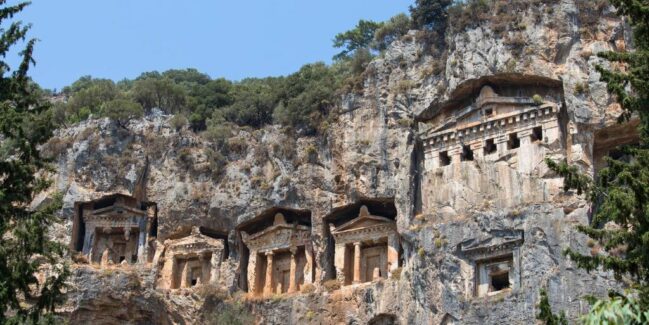
The sights of Turkey have a unique charm of ancient myths and fairy tales of Scheherazade, amazing landscapes, and unique natural monuments. Let’s look at the best things to do in Turkey to fall in love with this country.
Turkey is a beautiful country that holds a leading position in the field of tourism with lots od museums, hotels, mosques, and different destinations. The coasts of the four blue seas — the Aegean, Mediterranean, Black, and Marmara attract those who want to spend their holidays on the beaches, and the developed tourism sector provides a huge selection of places to stay and organize leisure activities in Istanbul, Antalya, Izmir, Bodrum, etc. In this rich country, you can immerse yourself in the Neolithic era, Ottoman and Roman time architecture, touch antiquity, and wander through the streets of cities from ancient local legends.
Due to its rich history, the country is extremely attractive for sightseeing holidays. People come here to get acquainted with the cultural heritage and natural sites, many of which are included in the UNESCO list as being of global importance.
Learn the best things to do in Turkey for all people and how to stay in touch with the world using the best eSIM for Turkey during your Turkish trip.
The Best Things to Do in Turkey: Top 20 Amazing Places
To see all the local attractions, one tour will definitely not be enough but the hospitable country is happy to meet tourists destination again and again, and each time reveals new facets of the oriental gem. Let’s look at the best things to do in Turkey with your trip partners.
1. Cappadocia
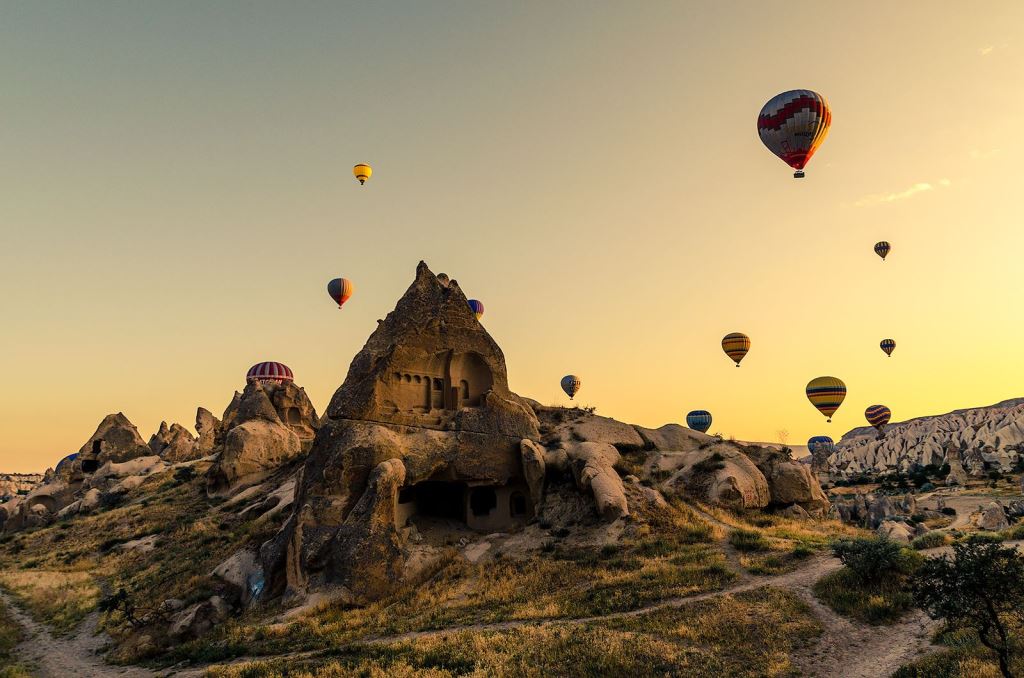
A trip to Cappadocia is an opportunity to explore the cave houses that once served as a refuge for Christians, churches in the rocks, underground cities, and other exciting objects of human culture. Here you can also see flocks of pink flamingos strolling along the water surface of the salt lake Tuz.
The region is quite developed in terms of infrastructure: in small towns, guests are welcomed by hotels of different levels, shops, food cafés, tour desks, and agencies that arrange balloon flights.
2. Ephesus

Ancient Ephesus, which has great archaeological value, is located on the western Turkish coast near the town of Selcuk. At various times, Greeks (including the famous philosopher Heraclitus), Byzantines, Seljuks, and Romans lived here. During the period of residence of the latter, the city reached its peak, becoming the second most important after Rome.
The streets of Ephesus are the keepers of the ancient cultural heritage. Here you can see the parts of the temple of Artemis that survived the earthquake, the library of Celsus (once it housed about 12 thousand scrolls), the Roman theater, the Basilica of St. Nicholas., St. John’s, the Agora (city square), the acropolis, and other architectural monuments.
3. Side
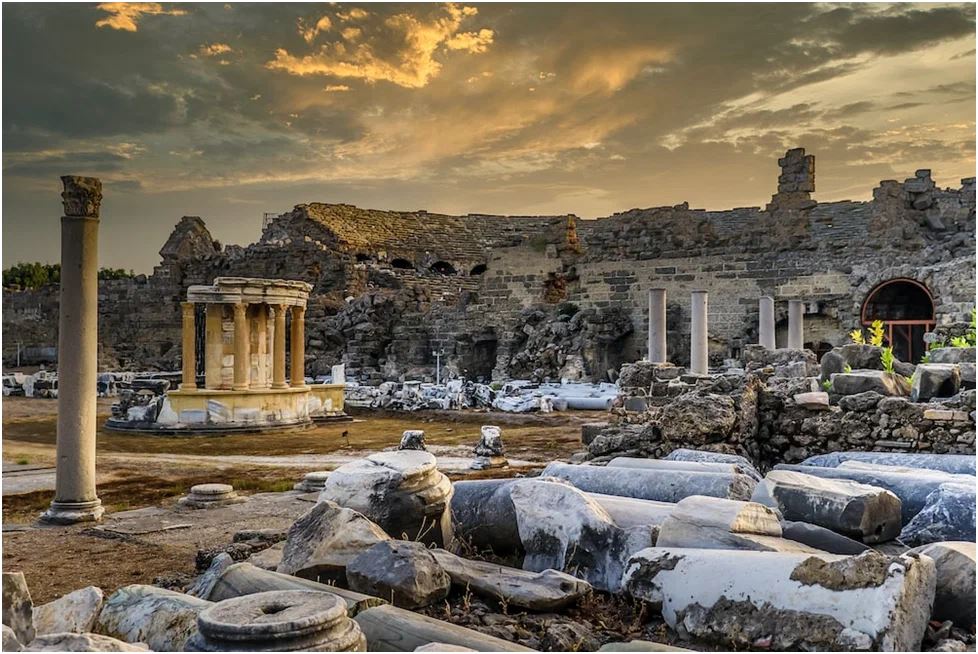
Ancient Side is a museum city where, in the open air, you can see the ruins of Greek buildings dating back to the 7th century AD and Roman structures of the 2nd century. The most famous are the temples of Apollo and Dionysus, the Vespasian Gate (1st century AD), the amphitheater, which once hosted up to 17 thousand spectators, the market square, the Triumphal Arch, and the aqueduct built to supply water from the Manavgat River to the city houses. An exposition of ancient interior items and utensils found in Side has been organized for tourists in the walls of the ancient baths.
4. Phaselis
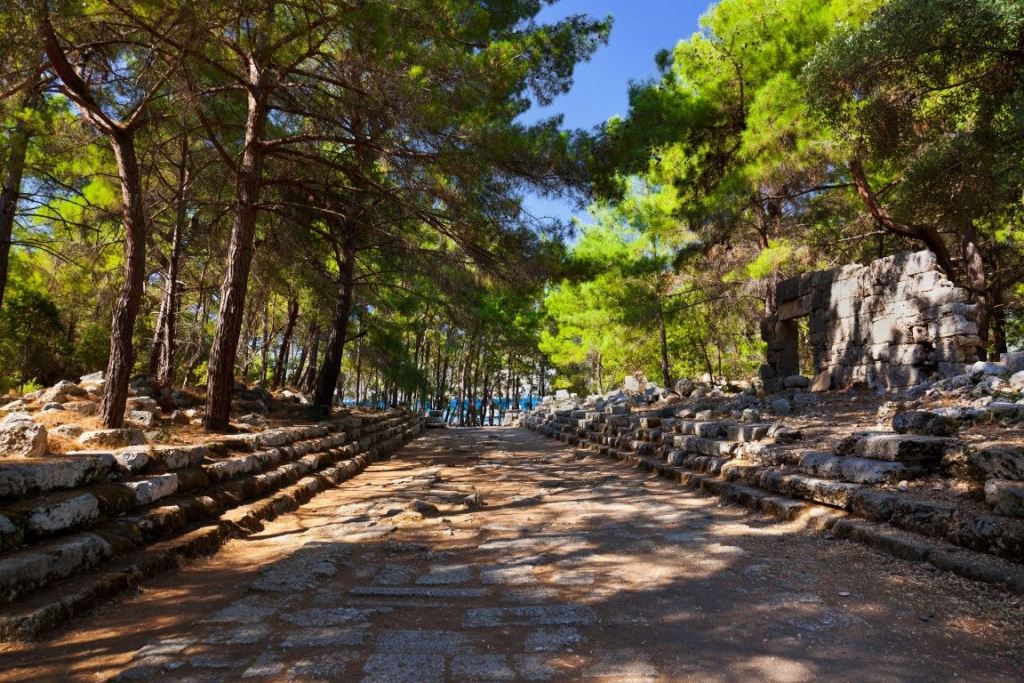
The cleanest beaches surrounded by pine and cedar forests make the place extremely picturesque, and the ancient ruins hidden in the green density of parks fill walks through Phaselis with unforgettable impressions.
The tourist route through the ancient sites runs through the necropolis where Alexander the Great was buried, the aqueduct, Hadrian’s Gate, the Agora, the amphitheater, numerous rooms of baths, and other attractions.
Read also:
5. Pamukkale

Pamukkale is known to most tourists as a geothermal resort with a natural pool filled with 36-degree mineral water. People who suffer from diseases of the cardiovascular and respiratory systems, atherosclerosis, and rickets, as well as those who want to rejuvenate the body come here. According to the guides, natural healing baths were the reason why Cleopatra herself visited these lands.
Pamukkale has great historical value: the ruins of the city of Hierapolis, founded in the second century BC, have been preserved on its territory. Visitors can explore the surviving parts of ancient baths, temples, and an amphitheater.
6. Alanya Castle
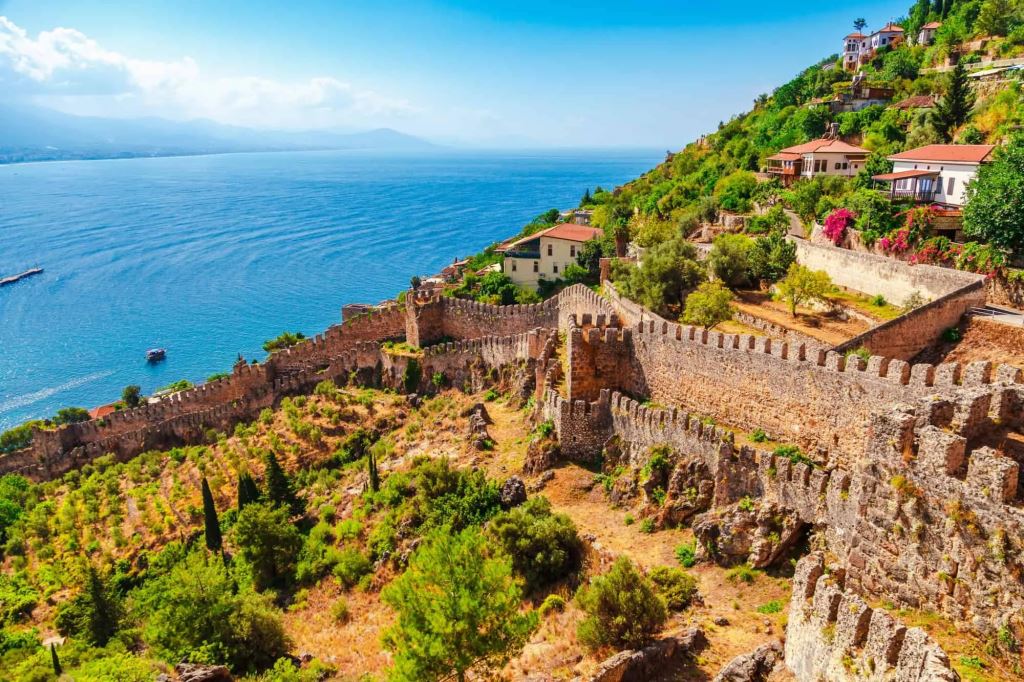
The fortification, the construction of which dates back to the 13th century, occupies a part of the peninsula on the territory of Alanya. The rocky surface of the earth, surrounded on three sides by Mediterranean waters, rises 250 m above sea level.
Those who wish to get acquainted with the history of the fortress can visit the open-air museum, where bathrooms, brick cisterns, a Byzantine church, and other buildings have been preserved.
7. Green Canyon
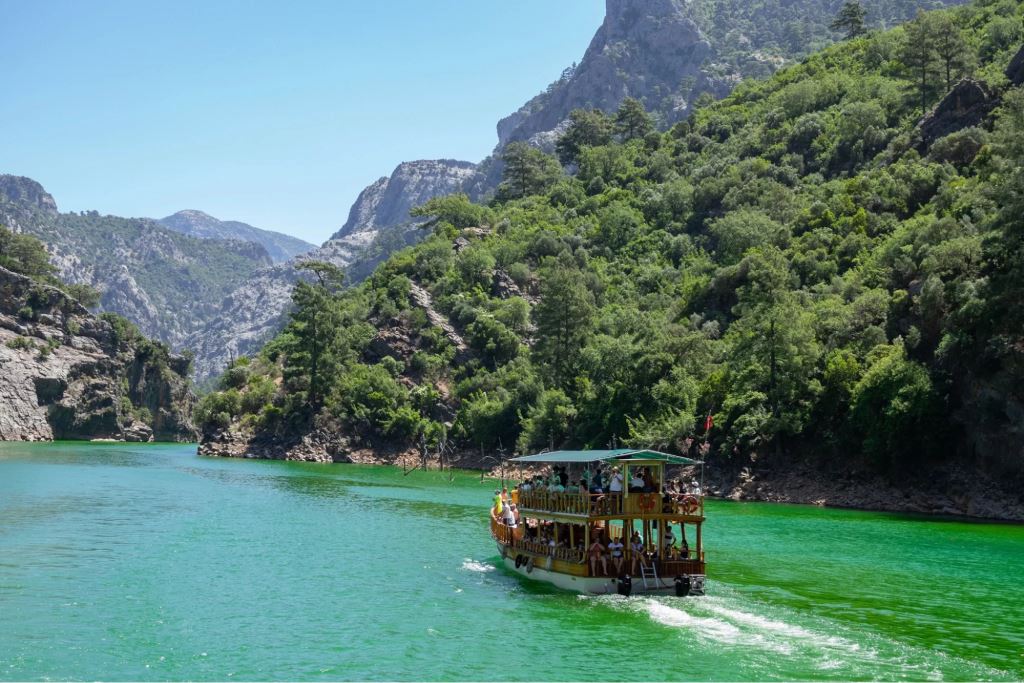
Green Canyon is one of Turkey’s natural attractions, and it has become its national park. The location between Antalya and Alanya makes the place popular among vacationers on the Mediterranean coast.
The artificial reservoir formed due to the construction of a hydroelectric power plant covers an area of about 500 hectares. Its waters are painted in emerald color and framed by green-covered rocks with fishes. Tangerine, orange, pomegranate, and olive trees, cacti, almonds, and other flora grow in the park. This is one of the best things to do in Turkey.
8. Duden Waterfalls
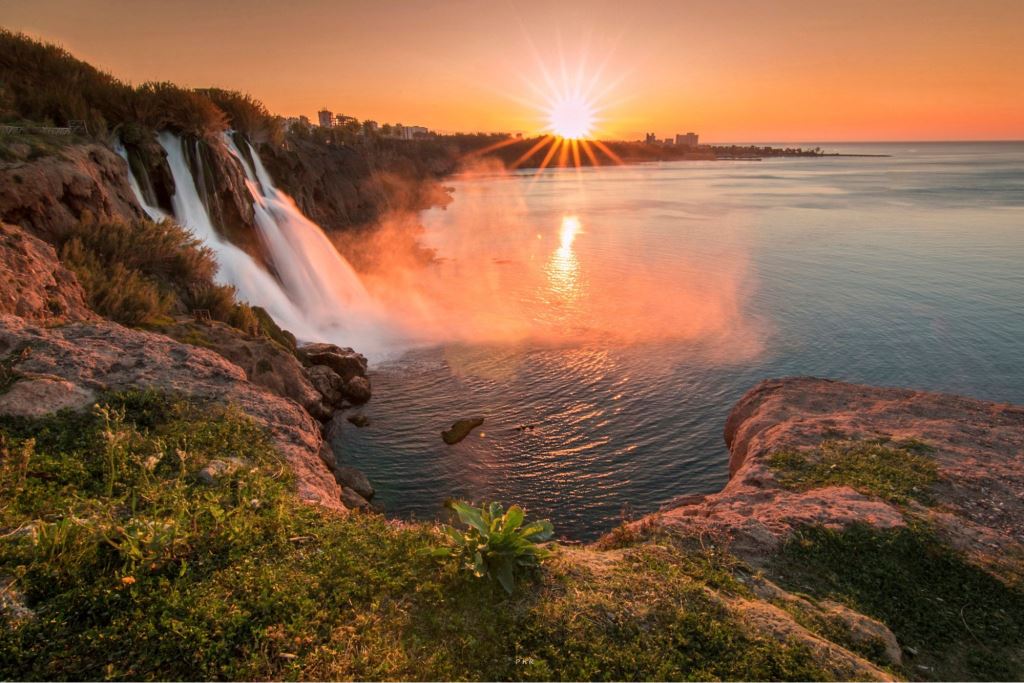
Antalya Duden Waterfall, which has become the hallmark of the resort, is formed by the Duden River. On its way from the Taurus Mountains to the Mediterranean coast, it forms many rapids and cascades, called the Upper Duden. Approaching the shore, the river collapses from a 40-meter height directly into the sea – this is the famous Antalya landmark, called the Lower Duden.
You can explore the waterfall both from the platform on the rock and from the water by boat. In the evening, the Lower Duden is illuminated, and the surrounding atmosphere becomes especially romantic.
9. Sumela Monastery
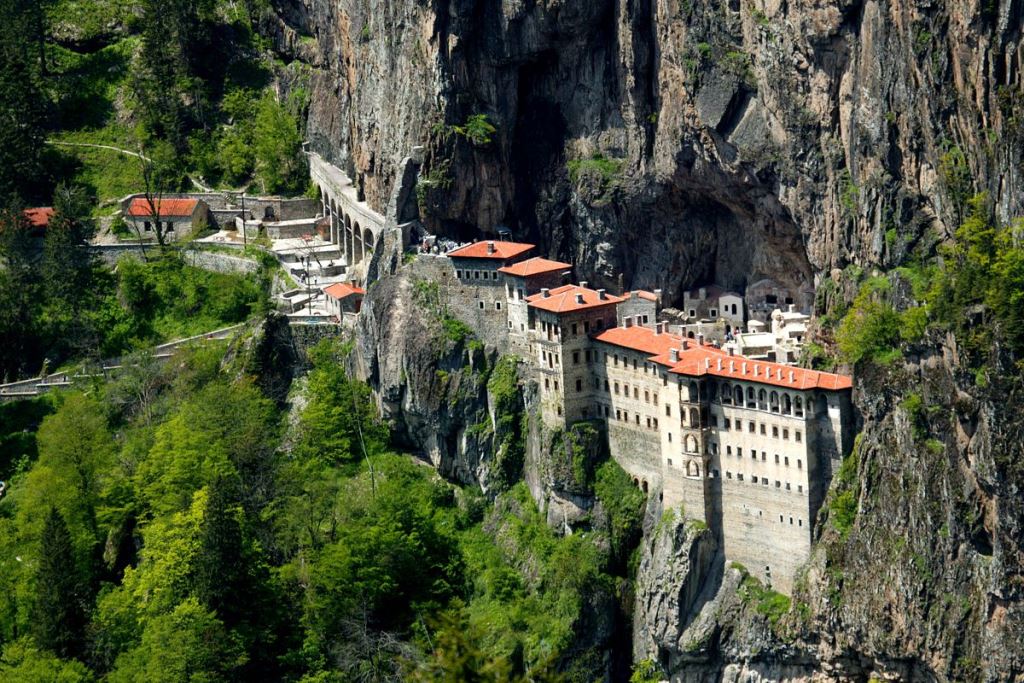
This Christian shrine is located at an altitude of 300 meters on the slope of Mount Mela. This territory was included in the Altyndere National Park, so it is under state protection.
“Panagia Sumela” translates as “The All-Holy One from Mount Mela”. A priceless relic was kept here — the first image of the Mother of God in the history of Orthodoxy, which works miracles. Its creation is attributed to Luke, the apostle of Jesus Christ, who was the first person to start painting Christian icons.
10. Manavgat Waterfalls
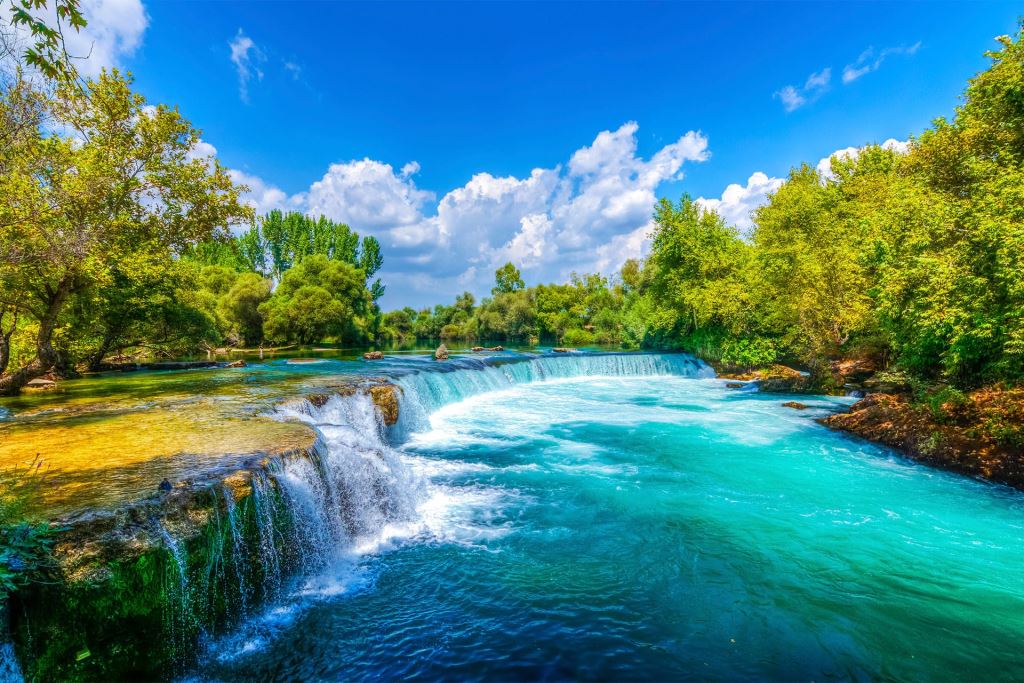
This beautiful water stream is located in Antalya province near the resort of Side and the city of Manavgat on the river, which bears the same name as this city and the waterfall itself. It is about two meters high and up to forty meters wide.
Not far from this landmark, playgrounds have been built from which lovers of the beauties of Turkey can capture the Manavgat waterfall. But getting close to the water and especially swimming here will not work.
Discover the beauty of Turkey and use the best eSIM for Turkey during your trip!
11. Mount Ararat

The volcanic mountain range is the highest in the Armenian Highlands: its highest point is more than 5 thousand meters away from sea level.
Since ancient times, Ararat belonged to Armenia, becoming the country’s business card and the decoration of the Armenian flag. According to the biblical legend, it was in the Ararat Mountains that Noah’s Ark stopped during the flood. Since 1920, the famous mountain belongs to Turkey. Climbing to the top of Ararat is possible only from its territories.
12. Troy
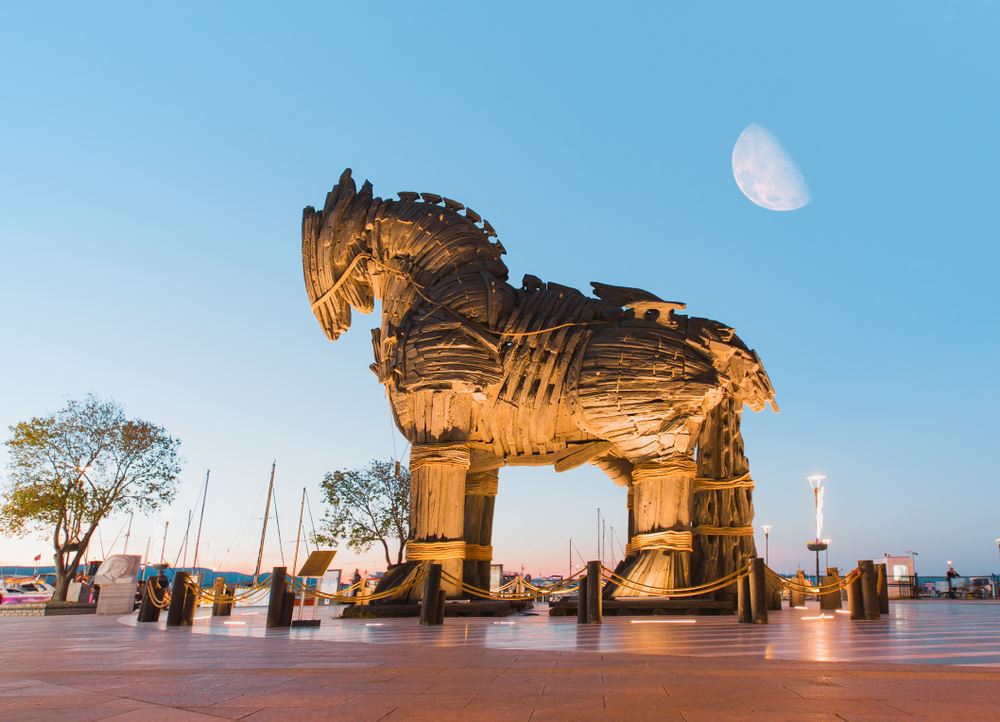
The ruins of Troy were discovered by archaeologist Heinrich Schliemann in the late 19th century. Based on the fragments of buildings found, scientists recreated the appearance of the ancient city, and currently, it is being demonstrated through models placed on the walls of the museum.
Tourists coming to Hissarlyk Hill (it is here that most of the artifacts were found) are greeted by the city symbol — a Trojan horse made of wood. It is the starting point of an excursion route through the national park.
13. Lycian Rock Tombs
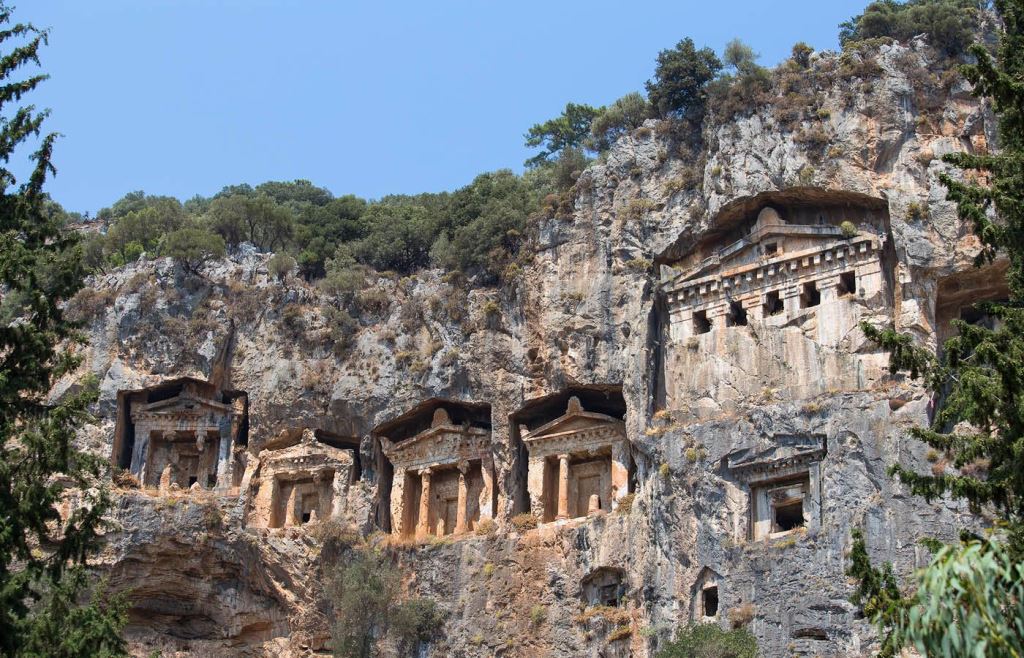
The tombs left behind by the inhabitants of ancient Lycia are located in southern Turkey. Most of them are concentrated on the territory of the former Lycian city of Mira, in the vicinity of modern Demre.
The necropolis was created in the 4th-6th centuries BC and was carved directly into the rocky surface of the mountains. It was intended for the burial of kings and representatives of the aristocracy. Every wealthy member of the society wanted to have a tomb with a sarcophagus, which was connected to others by means of stone stairs. The Lycians believed that from these rooms on the mountain peaks, their souls would go to heaven faster.
14. Damlatas Cave
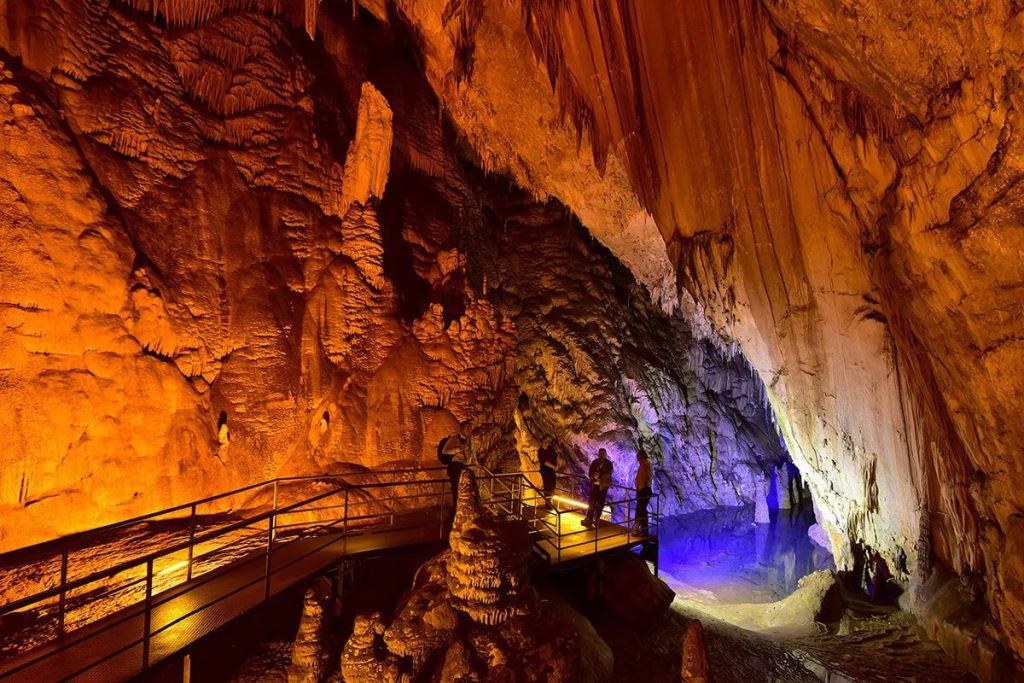
The most accessible natural attraction in Turkey is located in Alanya near Cleopatra Beach and the funicular station.
The karst cave consists of Large and Small halls, the passages to which are equipped with wooden decking. Walking along them, tourists look with interest at the bizarre stalagmites (stretching upwards from the ground) and stalactite (hanging like icicles) formations. Thanks to the lighting, the atmosphere is very mysterious and unusual.
15. Dalyan Turtle Beach

Dalyan is a small town in southwestern Anatolia in the province of Mugla. There are no fashionable hotels and entertainment venues here. Staying in modest hotels, tourists enjoy the tranquility and regularity of local life.
The resort town of Dalyan owes its fame to the nearby Iztuzu beach. Its sandy coast is visited annually by Caretta sea turtles to lay eggs. You can catch these animals from May to September.
16. Cleopatra Beach
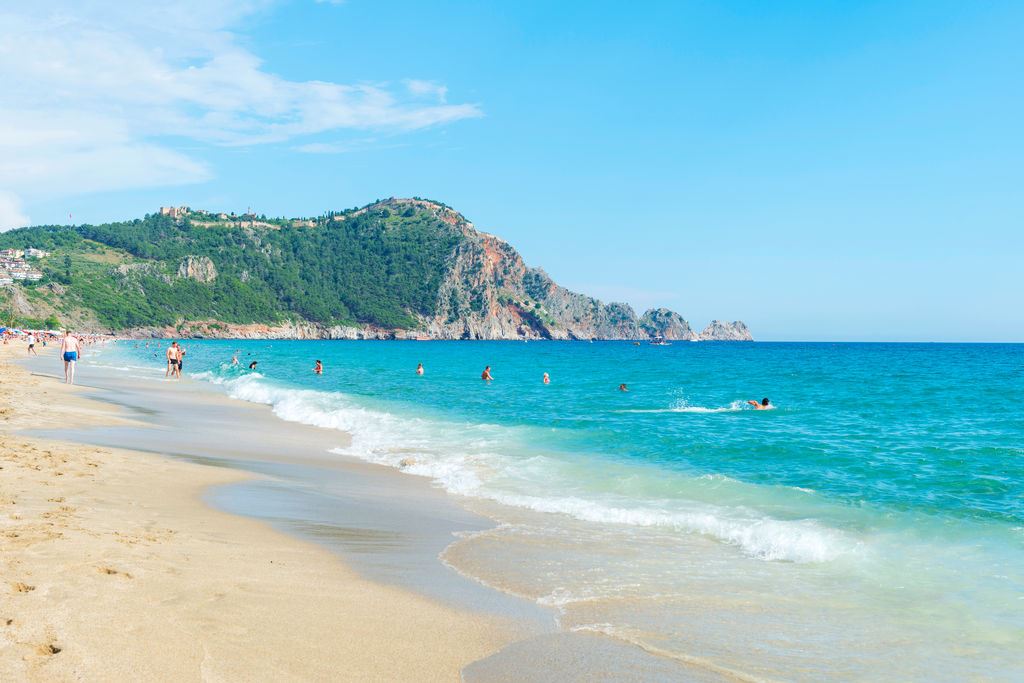
An impressive natural swimming pool filled with mineral water is located in Pamukkale, near the city of Denizli. It is known far beyond the borders of the country. First, due to the fact that, according to legends, in the 1st century BC it was a favorite bathing place of the Egyptian queen.
Most tourists come to Cleopatra’s Pool to enjoy taking wellness baths outdoors: bathing in 35-degree radon water with useful trace elements dissolved in it has a beneficial effect on the work of the heart, lungs, and other organs. This is one of the best things to do in Turkey.
17. Bosporus
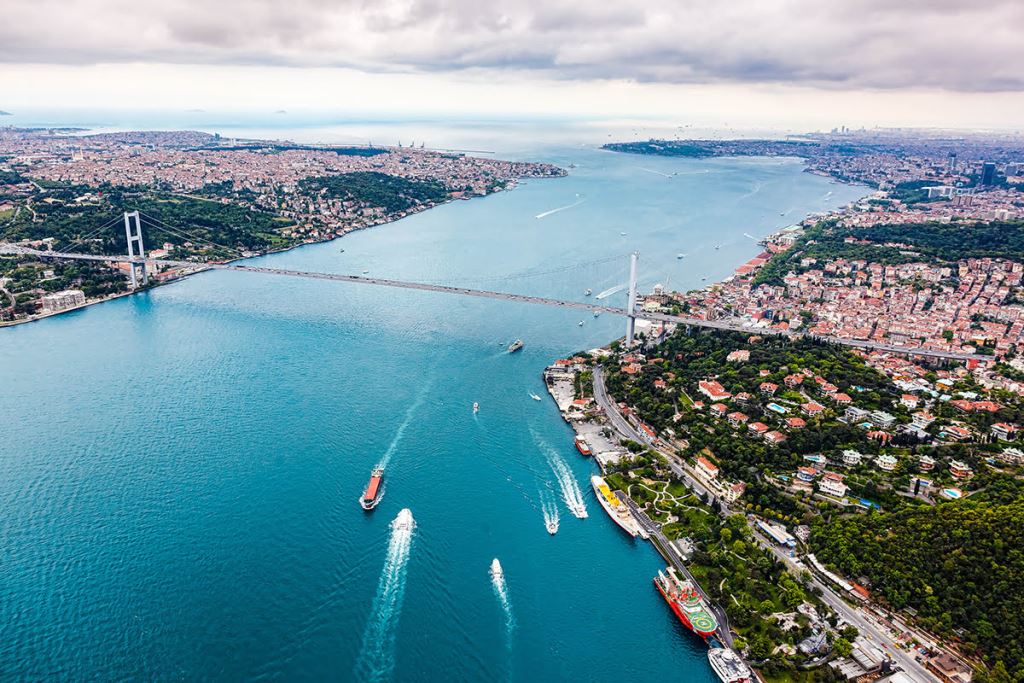
According to geologists, the Bosporus was formed more than 7 thousand years ago as a result of melting ice, which increased the water level in the Marmara and Black Seas; streams rushed towards each other, breaking through the rocks, and uniting into one current.
The origin of the name of the strait is associated with an ancient Greek myth. According to it, Zeus, in order to protect his beloved from the massacre of Hera, turned the girl into a cow, so that she managed to swim across the strait unnoticed and hide from the wife of the thunderer.
18. Yanartas
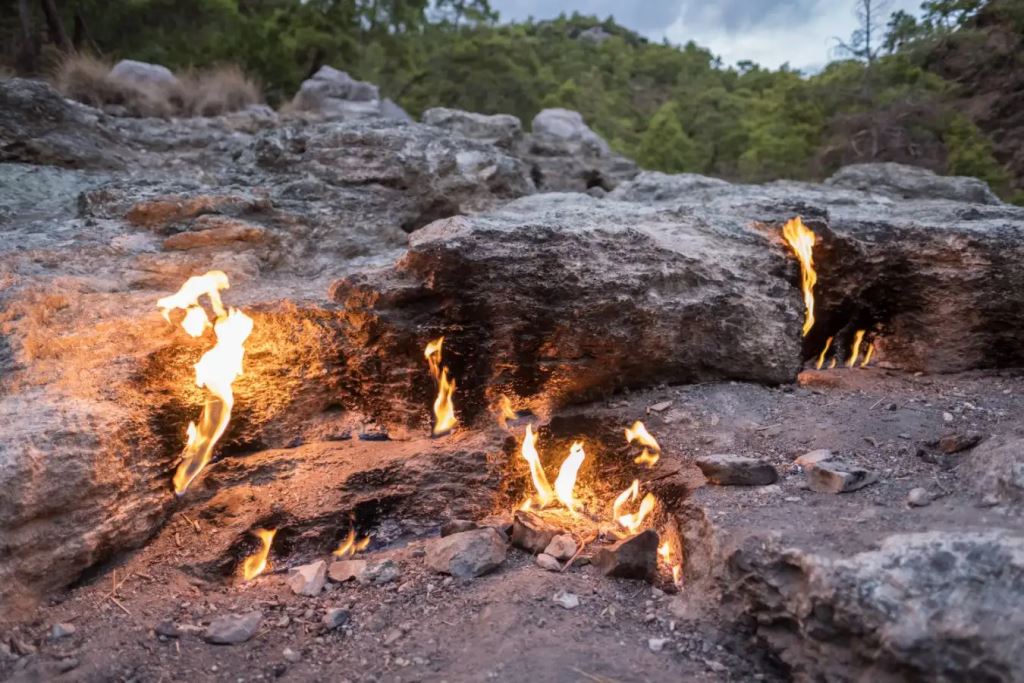
If you are interested in the mysteries of nature, then when visiting the sights of Turkey, do not miss the Yanartas mountain in Kemer. It is called fiery, and this is not accidental: through the cracks in the rocky rock, accumulations of natural gas constantly leak out, which periodically spontaneously ignite.
Since ancient times, the mountain has generated many legends trying to explain this phenomenon. For example, there is a legend that a fire-breathing Chimera lived on it. Bellerophon, the hero of ancient Greek myths, defeated her and threw her into the abyss. After that, the mountain itself became fire-breathing.
19. Princes’ Islands
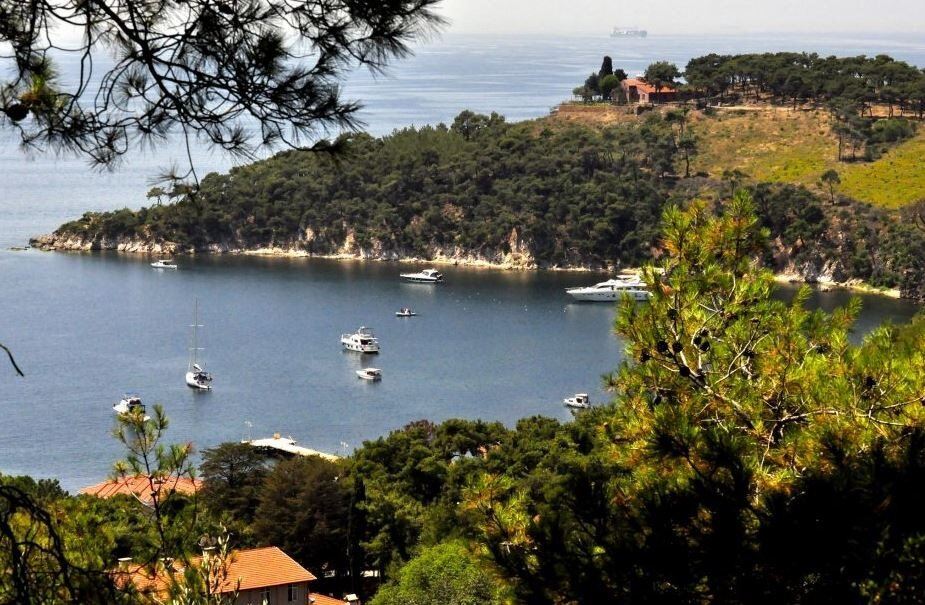
The nine islands in the Marmara Sea are an ecologically clean region, where people strive to relax on picturesque beaches, explore the rich underwater world, as well as get acquainted with the historical heritage left after the aristocracy lived here.
Now the Princes’ Islands (mainly the three largest ones — Burgazada, Heybeliada, and Buyukada) are a popular tourist destination where you can relax on equipped beaches, visit preserved churches and monasteries, as well as learn in museums about famous people who lived in the archipelago.
20. Mount Nemrut

Nemrut-Dag is part of the Taurus Mountains, which stretch across the southeastern part of the country in the region of Adiyaman province. Until the middle of the 19th century, its rocky surface, almost devoid of vegetation, did not arouse the interest of either locals or foreigners. It was only after the discovery of traces of the Armenian dynasty of the Yervandids, who ruled from 401 BC, on the mountain peak in 1881, that Nemrut-Dag became attractive to archaeologists.
Which currency is better to use when traveling in Turkey?
When traveling in Turkey, it is better to use Turkish lira (TRY), as this is the main currency of the country. In large cities and tourist areas, euros and dollars are also accepted but the exchange rate may be unprofitable. For convenience, you can exchange money at banks or exchanges, as well as use bank cards in most shops and restaurants.
How many sites are under UNESCO protection in Turkey?
There are currently 18 sites under UNESCO protection in Turkey. Among them are such famous places as Istanbul Historical Center, Cappadocia, Pamukkale, and Ephesus. These sites cover both the cultural and natural heritage of the country.
How to Stay Connected During Your Turkey Trip?
Any trip is an opportunity to discover new countries and cities. At the same time, it is important to keep these memories and share them with friends on social networks. To do this, it is essential to have a connection and the internet, which will not cost more than spent on travel. The best way to stay connected for reasonable money is to use eSIM. eSIM is a built-in SIM card that just needs to be activated by an eSIM operator.
However, it is important to choose a trusted and proven eSIM operator, for example, eSIM Plus, which offers many tariff plans and functions for each user.
Use eSIM Plus when traveling and discover Turkey from the most picturesque sides.





